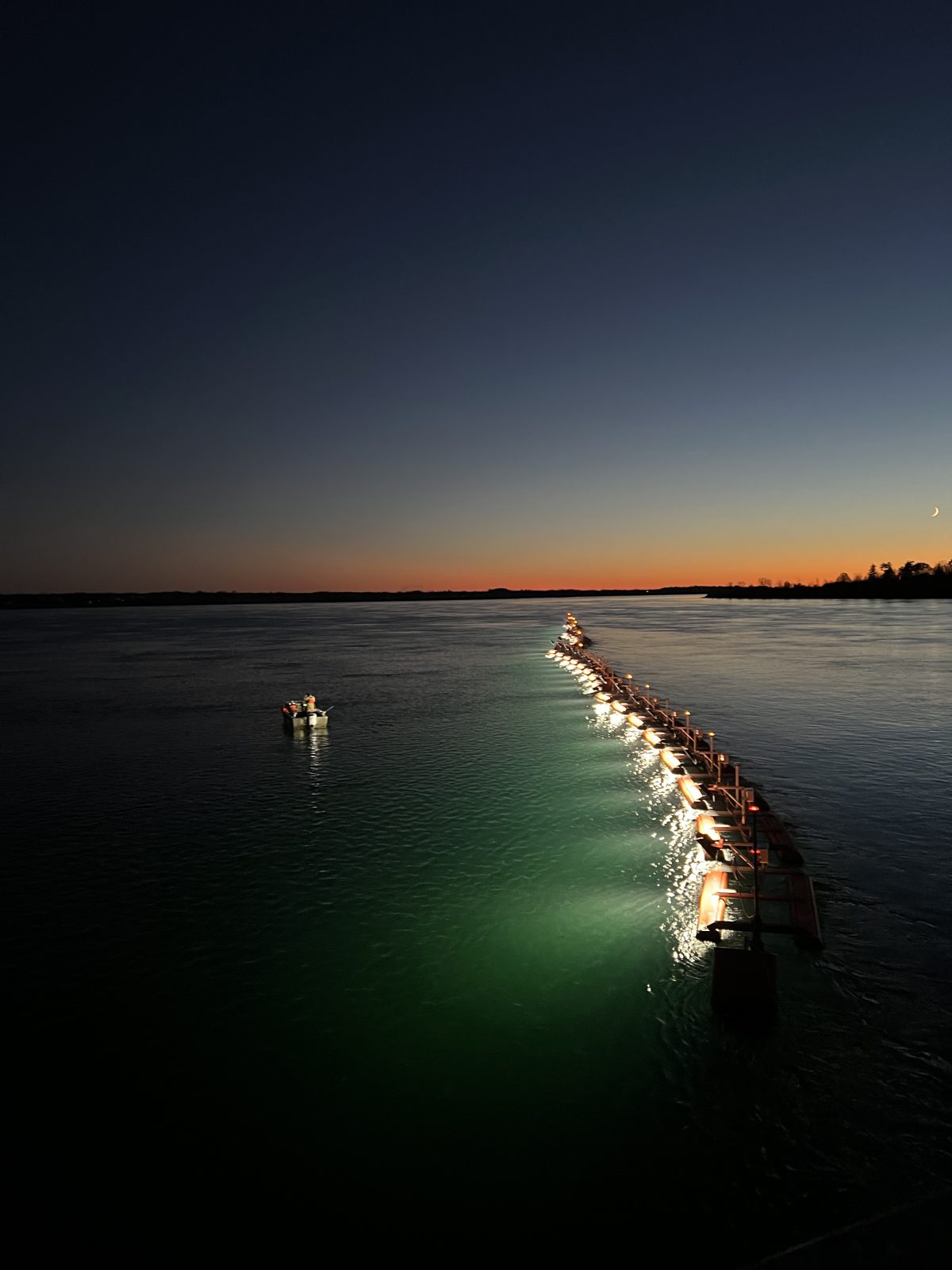Save The River recently traveled to the Iroquois Water Control Dam in Lisbon, NY to learn more about the Eel Protection Study. American eel are listed as an endangered species by the Province of Ontario and are a species of concern in New York State.
American eel spawn in the Sargasso Sea; an area of the Atlantic Ocean. In their first phase of life, they swim from the Sargasso to the North American shore. They continue inland along rivers, growing and gradually making their way upstream to bodies of water like Lake Ontario, where they spend most of their adult life. Eel can live up to 40 years! Once they are ready to reproduce, adult eel navigate back to the ocean and the Sargasso Sea.
To complete their spawning migration from Lake Ontario and the St. Lawrence River to the Atlantic Ocean, eel must pass through two hydroelectric power stations; the Moses-Saunders Power Dam at Massena/Cornwall and the Beauharnois Generating Station in Quebec. Navigating these dams is treacherous for the fish; their bodies are up to 4 feet long as adults, and the turbines pose a deadly threat. Approximately 40% of eel that attempt to make it through the two power dams are killed.
The Eel Protection Study is a five month study that investigates the use of light to guide adult eel. 400 tagged eel have been released as part of the study; the behavioral response of the eel is observed through acoustic tags and acoustic receivers. The goal of this study is to determine a means to guide, collect, and transport the eel around the two hydroelectric power stations during migration.
There are many project participants in the study: Ontario Power Generation (OPG); Hydro Quebec; U.S. Fish & Wildlife Service; New York Power Authority (NYPA); Canadian Department of Fisheries and Oceans; Quebec Ministry of Forest, Fish and Wildlife, and Parks; Ontario Ministry of Natural Resources and Forestry; New York State Department of Environmental Conservation; Carleton University; and Natural Sciences and Engineering Research Council (Canada); and is managed by the Electric Power Research Institute (EPRI).
For more information about this study, contact Paul Jacobson at pjacobson@epri.com.



